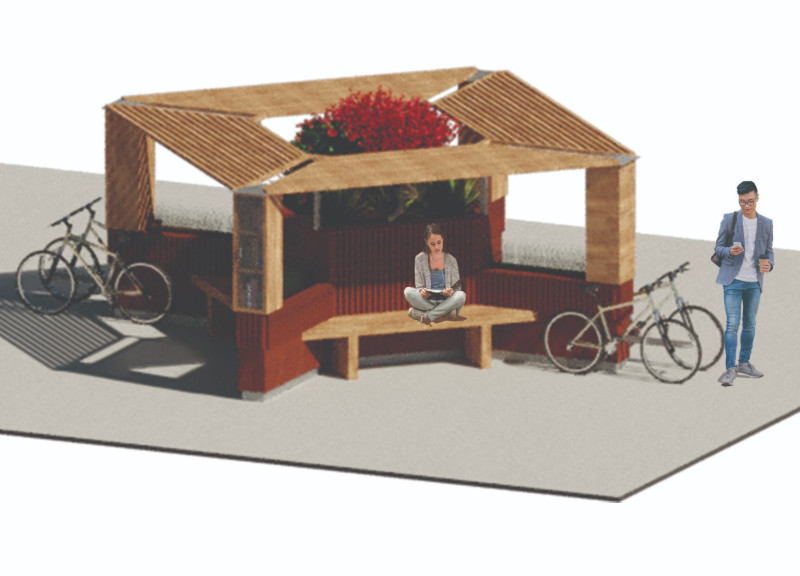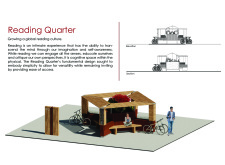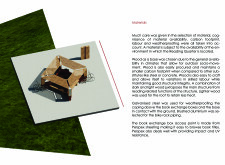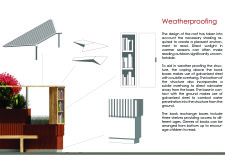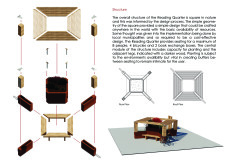5 key facts about this project
Architecturally, the Reading Quarter consists of a square framework that serves as both a structure and an environment for reading activities. The project aims to invite individuals into its space while promoting community engagement through reading. The design incorporates key functional areas, including seating arrangements and book exchange boxes, allowing for individual and group interactions. This multifunctionality is central to its mission of enhancing a reading culture.
Unique Structural Features
The design employs a square geometric form, which is essential for creating an efficient and adaptable environment. It includes slatted walls that facilitate ventilation and reduce direct sunlight, creating comfortable conditions for readers. These walls are complemented by integrated seating, which encourages social gatherings and discussions around literature. The roof design is particularly noteworthy; it features overhangs that provide shading and protect users from adverse weather. This design approach not only enhances user comfort but also emphasizes a sustainable relationship with the surrounding environment.
Material Choices
Materiality plays a crucial role in the project’s success. The Reading Quarter integrates wood, galvanized steel, brushed aluminum, and Perspex sheeting. Wood is utilized for seating and structural elements, chosen for its warmth and sustainability. Galvanized steel protects against moisture, especially at ground-level applications, while brushed aluminum provides durability for utility features like bike racks. The use of Perspex for book exchange boxes allows for visibility and accessibility while maintaining durability. These materials reflect a commitment to sustainability and user experience, while also addressing environmental concerns.
Overall, the Reading Quarter exemplifies thoughtful architectural design through functional space allocation and careful material selection. The emphasis on community interaction, along with its adaptable and welcoming environment, distinguishes it from typical communal reading spaces.
For a more in-depth examination of the Reading Quarter, including architectural plans, sections, and innovative design ideas, explore the detailed project presentation. This will provide a comprehensive view of the elements that contribute to its role as a modern reading environment.


